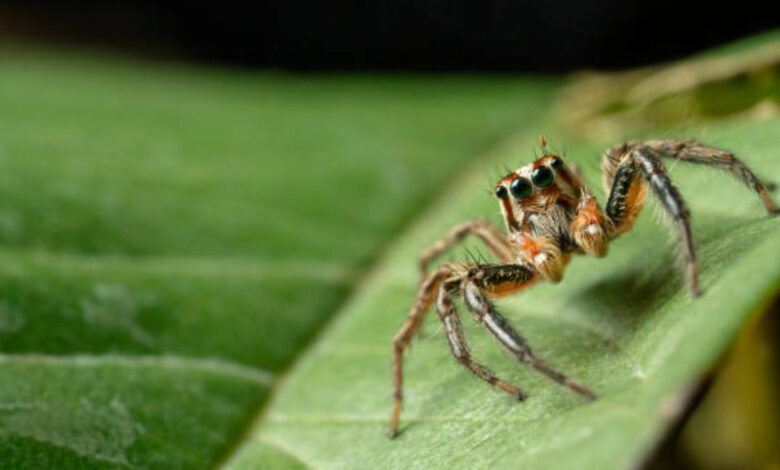How long do jumping spiders live and what affects their lifespan?

Jumping spiders may be small, but they pack a punch with their vibrant colors and energetic personalities. With over 6,000 species scattered across the globe, these fascinating arachnids have captured the attention of many nature enthusiasts. Known for their incredible jumping abilities and keen hunting skills, they’re not just another insect in your backyard. But how long do jumping spiders live? This question sparks curiosity about their lifespan and what influences it. Let’s dive into the intriguing world of jumping spiders to uncover their life expectancy and the various factors that affect it.
Lifespan of jumping spiders
Jumping spiders, known for their vibrant colors and agile movements, typically have a lifespan ranging from one to three years. This can vary significantly based on the species and environmental conditions.
Some smaller jumping spider species may only live up to a year, while larger ones often enjoy longer lives. Factors like habitat stability play a crucial role in determining how long they thrive.
In the wild, many face challenges that can shorten their lifespans. Predation and harsh weather conditions contribute to these risks. However, those in more stable environments tend to live longer.
Interestingly, females generally outlive males due to less energy expended during mating rituals. This difference highlights the unique reproductive strategies within this fascinating group of arachnids.
Factors that affect their lifespan
Jumping spiders, like many creatures, face a variety of influences on their lifespan. Understanding these factors offers insight into their survival.
One significant aspect is environmental conditions. Temperature and humidity can dramatically impact their well-being. A stable habitat promotes longevity, while extreme weather can shorten life spans.
Diet plays a crucial role as well. These agile hunters rely on a steady supply of prey to thrive. Limited food sources may lead to malnutrition, affecting growth and overall health.
Mating behaviors also contribute to lifespan variability. Female jumping spiders sometimes eat males after mating, which clearly affects reproductive outcomes and the male’s chance for survival.
Exposure to predators or disease adds another layer of risk. Those that navigate threats effectively tend to live longer lives in the wild compared to those less fortunate.
Environmental factors
Environmental factors play a crucial role in determining how long jumping spiders live. These arachnids thrive in diverse habitats, from dense forests to urban gardens. The availability of shelter directly impacts their survival.
Temperature and humidity influence their metabolic rates too. Extreme heat or cold can shorten their lifespan significantly. A stable environment allows these tiny hunters to flourish.
Pollution also poses threats to jumping spiders. Contaminated areas may lead to reduced prey availability and increased stress levels for them.
Additionally, climate change is altering ecosystems worldwide, affecting food sources and habitat stability for many species, including jumping spiders. Their adaptability will be tested as conditions shift unpredictably over time.
Understanding the environmental aspects that affect these fascinating creatures can help us appreciate their complexity while promoting better conservation efforts in our changing world.
Diet and nutrition
Jumping spiders are fascinating creatures with specific dietary needs. They primarily feast on small insects, which provide essential proteins and nutrients. These arachnids exhibit remarkable hunting skills, often stalking their prey before pouncing with precision.
A varied diet is crucial for their growth and longevity. Different food sources can enhance their health, ensuring they receive the necessary vitamins and minerals. Common targets include flies, moths, and other small arthropods.
Interestingly, jumping spiders also showcase some level of flexibility in their eating habits. In situations where traditional prey is scarce, they may scavenge or consume smaller species within their environment.
This adaptability not only supports survival but also plays a role in influencing lifespan. A well-nourished spider tends to thrive longer than one that struggles to find adequate food sources. Hence, a balanced diet significantly contributes to the overall vitality of these agile hunters.
Mating and reproduction
Mating in jumping spiders is a fascinating dance of courtship. Male jumping spiders often perform intricate displays to attract females. These can include vibrant color patterns, specific movements, and even vibrations.
Once a male captures the female’s attention, he approaches cautiously to avoid being mistaken for prey. If she’s receptive, mating occurs quickly but can be risky for the male. In some species, females may consume their partners after mating.
After successful copulation, females lay eggs in silk sacs. This protective casing keeps the eggs safe from predators and environmental threats. Depending on species and conditions, a single sac can contain dozens or even hundreds of eggs.
The young spiderlings emerge within weeks and begin their independent lives right away. The early days are critical; they face numerous dangers as they venture out into the world alone.
The importance of conservation efforts for jumping spiders
Jumping spiders play a crucial role in our ecosystems. As natural pest controllers, they help maintain the balance of many environments by preying on insects. Their presence can significantly reduce unwanted pests around homes and gardens.
However, habitat loss poses a significant threat to these tiny hunters. Urbanization and agricultural expansion destroy their natural habitats, leading to declining populations. Protecting these areas is essential for the survival of jumping spiders.
Conservation efforts can also educate communities about the importance of biodiversity. By highlighting the benefits that jumping spiders bring, we foster appreciation and support for wildlife preservation.
Promoting native plant growth encourages diverse insect populations, which in turn supports healthy spider communities. Simple actions can make a big difference in safeguarding these fascinating creatures for future generations.
Conclusion
Jumping spiders are fascinating creatures that not only captivate with their unique appearance but also play crucial roles in our ecosystems. Understanding how long do jumping spiders live gives us insight into their biology and the environmental conditions they thrive in.
Their lifespan can range from one to two years, depending on various factors. Environmental influences such as temperature and habitat quality significantly impact their longevity. A stable environment with ample shelter can help them avoid predators and harsh weather, thereby extending their lives.
Diet plays a vital role too. Jumping spiders primarily feast on other small insects. A nutritious diet helps them grow stronger and increases their chances of survival throughout different life stages.
Mating behaviors also affect lifespan; after reproduction, female jumping spiders often die shortly afterward while males might have slightly longer lives if they escape predation during mating seasons.
Conservation efforts are essential for maintaining healthy populations of these remarkable arachnids. Their presence indicates a balanced ecosystem; thus, protecting natural habitats is vital for ensuring they continue to thrive.
Understanding the complexities around how long do jumping spiders live sheds light on broader ecological dynamics worth appreciating and protecting.
